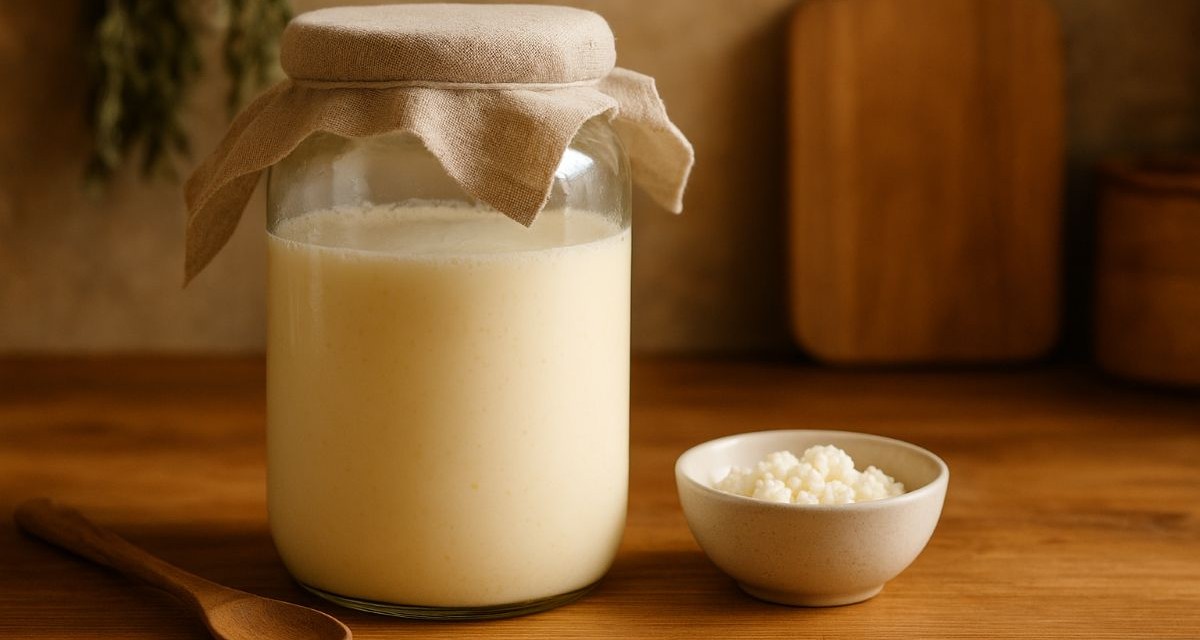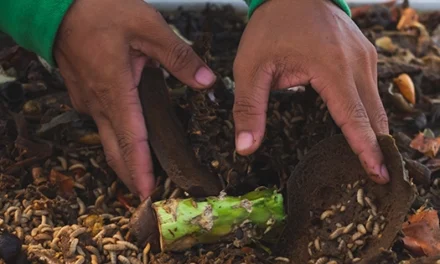Fermented milk has been part of traditional diets for thousands of years, valued for its tangy flavor, gentle preservation, and surprising health benefits. Long before refrigeration, people relied on fermentation to keep milk safe and nourishing. Today, the same simple process remains a powerful way to support digestion, boost immunity, and add resilience to your homestead pantry.
Modern shelves are filled with commercial yogurts and flavored drinks, yet few of them carry the depth and integrity of true, homemade fermented milk. The real version is alive with beneficial bacteria, quietly transforming simple milk into something far more robust. It is one of those old world staples that prove how nature gives us everything we need if we work with it rather than against it.
Fermented milk also reconnects us with slower food traditions. When you make it at home, you witness firsthand how milk changes over time, developing a personality shaped by temperature, culture strains, and patience. This awareness strengthens your understanding of natural preservation methods and brings a sense of craftsmanship to your kitchen.
What Fermented Milk Really Is
Fermented milk is created when natural or added cultures convert milk sugars into lactic acid. This gentle souring thickens the milk and protects it against harmful organisms. Instead of spoiling, the milk becomes more stable, easier to digest, and richer in nutrients.
This process does not require fancy tools or complicated steps. A clean jar, a warm corner, and patience are often enough. Fermentation gives the milk a soft tang, a smooth texture, and a usefulness that stretches far beyond its original form. It is a living food, improving itself day by day.
Different cultures produce different flavors and textures, making fermentation surprisingly versatile. Whether you prefer something thin and drinkable or thick and spoonable, the process adapts easily. Once you begin experimenting, you may find that no two batches are exactly alike, which is part of the charm of working with live foods.
Benefits of Fermented Milk
One of the greatest strengths of fermented milk is its ability to support gut health. The natural probiotics help balance the digestive system, which in turn strengthens the body’s natural defenses. People who struggle with dairy often find that fermented versions sit much easier on the stomach because the bacteria have already broken down much of the lactose.
Fermented milk also carries improved vitamin availability, particularly B vitamins that help with energy and resilience. In colder months or stressful times, foods like this offer steady nourishment without relying on store bought products or additives.
Here are some key benefits that make fermented milk so valuable for a self sufficient household:
• Improves nutrient absorption naturally
• Supports long term gut and immune health
• Extends the usable life of fresh milk without refrigeration
Because fermented milk is alive, its benefits accumulate with regular consumption. Over time, many people notice improved digestion, steadier energy, and fewer issues with food sensitivities.
How to Make Fermented Milk at Home
Start with fresh milk from the store or, if you are fortunate, directly from your homestead animals. Bring it to a gentle simmer to reduce unwanted microbes, then cool it to a warm temperature. Adding a starter culture such as yogurt, kefir grains, or even a spoon of cultured buttermilk gives the milk the beneficial bacteria it needs.
Once mixed, keep the milk covered and warm for several hours. You will see it thicken gradually as the cultures take hold. The result is a smooth, slightly tart milk you can drink, cook with, or turn into other fermented staples like soft cheese or cultured cream. Each batch teaches you something about timing, temperature, and the quiet rhythms of fermentation.
As you grow more comfortable, you can adjust fermentation length to match your tastes. Shorter ferments create milder flavors, while longer ones produce sharper tang and thicker consistency. This flexibility allows you to tailor the process to your climate, your schedule, and your preferred textures.
More information on milk fermentation length can be seen here:
Different Types of Fermented Milk
Cultures around the world have created their own forms of fermented milk. Kefir, with its light fizz and rich probiotic content, is one of the most active. Yogurt is thicker and milder, perfect for blending or eating with honey. Cultured buttermilk works beautifully in baking and traditional recipes.
These variations show how flexible and forgiving fermented milk can be. Once you learn the basics, you can adapt it to your kitchen, your taste, and whatever ingredients you have on hand. It is not strict science but a partnership between you and the living cultures in the jar.
Some homesteaders even explore regional styles like filmjölk, viili, or amasi. Each has its own texture, acidity, and microbial makeup. Exploring these opens the door to a much larger world of traditional foods that support health and long term food security.
How to Use Fermented Milk in the Kitchen
Fermented milk can be used as a drink, a marinade, a soup base, or a replacement for sour cream. It tenderizes meats, enriches breads, and brightens sauces with a gentle tang. Many old time recipes relied on fermented dairy to add depth and stability long before packaged ingredients existed.
Keeping a small supply on hand gives you options during shortages or emergencies. When fresh ingredients are limited, fermented milk becomes both a flavor enhancer and a source of nutrients that lasts far longer than raw milk alone.
Its versatility also makes it a quiet hero in frugal cooking. With a single jar, you can stretch meals, improve flavor, and build nutrition naturally. In times of scarcity or uncertainty, these small advantages add up quickly.
Final Thoughts
Fermented milk is a quiet, reliable companion for anyone living a self sufficient lifestyle. It brings together simplicity, nutrition, and preservation in a way that honors the wisdom of generations before us. When you ferment milk at home, you gain more than a healthy food. You gain a skill that strengthens your independence.
In an era where many foods come from factories instead of fields, fermented milk restores a sense of connection and control. Each jar reminds you that some of the best nourishment comes from the most traditional practices.
A Pantry That Stands When the System Fails
Fermented foods are one piece of a long lasting survival pantry. If you want to go further and build a food supply that can withstand power outages, shortages, grid failures, or natural disasters, The Lost Superfoods is an invaluable guide. It brings back forgotten preservation methods, nutrient dense recipes, and time tested techniques that helped earlier generations survive when modern conveniences were not available.
If you want a pantry capable of supporting your family through the unexpected, explore these traditional superfoods and the knowledge behind them.
You may also like:
How To Make Condensed Milk That Can Last More Than 2 Years
50+ Items You Should Stockpile Before The Next Great Depression (Video)
Soft Milk Bread Without An Oven
Fermented Foods for Gut Health: A Prepper’s Guide to Building Immunity and Self-Sufficiency














